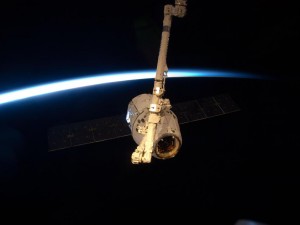I’ve been sitting on this press release from NASA’s History Program Office for a week or so now:
RELEASE: 12-247
NASA HISTORY NOW AVAILABLE ON ITUNES U
WASHINGTON — Marking the 43rd anniversary of the Apollo 11 moon landing, NASA has added an extensive collection of historical video, audio, photographs and documents to iTunes U.
iTunes U is a platform for making educational resources available to a wide audience through the iTunes Store.
NASA’s History Program Office iTunes U site currently contains about 300 items that represent a broad sweep of NASA history related to important moments, activities and figures in NASA history. The site’s content is free to download.
“New materials will continue to be uploaded as we expand the coverage both in depth and breadth,” said Bill Barry, NASA’s chief historian. “We’re thrilled to educate people on NASA’s rich history and are open to user suggestions and requests.”
The site includes Apollo program material with a collection of items for each of the Apollo missions, as well as a special Politics of Apollo collection of key documents related to the U.S. lunar program.
The site also features eBooks from the NASA History Series. Available titles include reader favorites such as Asif Siddiqi’s “Challenge to Apollo,” the “Exploring the Unknown” series of documentary histories, and all four volumes of Boris Chertok’s “Rockets and People.”
Other agency programs using iTunes U include NASA’s Academy of Program, Project and Engineering Leadership (APPEL), NASA Spinoffs from the Office of the Chief Technologist, and collections from NASA’s Jet Propulsion Laboratory. To view all of NASA’s iTunes U sites and download material, visit:
To view Apollo materials not found on iTunes U, visit NASA’s history website at:
For additional interactive features and podcasts about NASA, visit:
-end-
On one hand, yay! More NASA history! On the other hand, damn! iTunes U!
Is there a more frustrating user interface than the one Apple deemed adequate for iTunes? Yes, I want to explore the Apollo 11 Press Kit. No, I don’t want to waste even one more second of my life with iTunes. My approach so far has been to look at the contents list in iTunes and then dig through NASA’s website/archives to find what I want there (the
Apollo 11 Press Kit, for instance; I’m not sure if I should admire or shake my head at an organization that thinks it’s okay to send a man to the moon in a 12pt Courier typeface, probably pounded out on an IBM Selectric). It’s working pretty well, but I have a feeling that NASA would prefer I stay within iTunes U. Sorry, folks at the NASA History Program Office. I just can’t do it.








